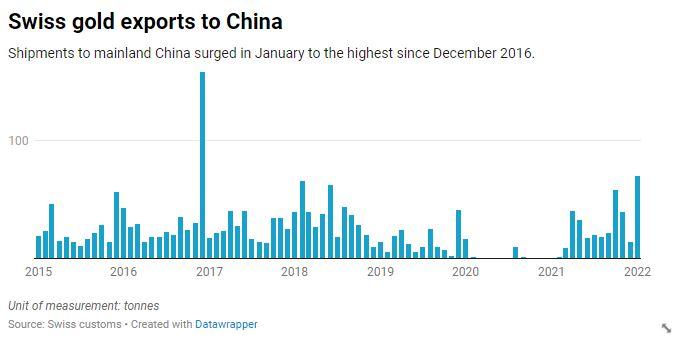Swiss exports experienced a notable decline in recent months as the initial surge in demand begins to wane and the country’s persistently strong franc weighs on international sales. According to data released this week, the slowdown signals growing challenges for Switzerland’s export-driven economy, which has benefited for years from robust global appetite but now faces headwinds from currency strength and shifting market dynamics. The latest figures highlight the delicate balance Swiss manufacturers and exporters must navigate amid fluctuating foreign demand and an increasingly expensive currency, raising questions about the outlook for Europe’s third-largest economy.
Swiss Export Growth Stalls Amid Waning Pre-Buying Activity and Currency Strength
After a period of accelerated shipments driven by anticipation of regulatory changes and tariff adjustments, Swiss exports have encountered a significant slowdown. The sharp rise in advance orders, often referred to as pre-buying activity, has diminished as businesses adjust their inventories and postpone new contracts. This pullback reflects caution among international buyers amid global economic uncertainties, particularly in key markets where demand has softened.
Compounding these headwinds is the pervasive strength of the Swiss franc, which has put additional pressure on exporters by making Switzerland’s goods more expensive on the global stage. Industries such as precision instruments, luxury watches, and pharmaceuticals-cornerstones of Swiss exports-are grappling with tightened profit margins and reduced price competitiveness. Analysts point to the following factors influencing the current export landscape:
- Currency appreciation: Swiss franc elevated against euro and dollar.
- Reduced stockpiling: Companies completed inventory build-ups during earlier quarters.
- Demand volatility: Fluctuating orders from European and Asian markets.
| Export Sector | Q1 Growth (%) | Q2 Growth (%) | Impact Factor |
|---|---|---|---|
| Luxury Watches | 8.2 | 1.5 | Currency Strength |
| Pharmaceuticals | 5.4 | 0.6 | Demand Uncertainty |
| Machinery | 6.0 | -0.3 | Reduced Pre-Buying |
Appreciating Franc Undermines Competitiveness in Key Export Markets
The sustained strength of the Swiss franc has increasingly posed challenges for exporters, as it directly impacts price competitiveness in vital foreign markets. Swiss companies face mounting pressure to maintain profit margins while grappling with reduced demand, attributed primarily to costlier Swiss-made goods for international buyers. Industry analysts highlight that sectors traditionally driven by volume sales are now navigating a landscape where pricing flexibility is limited, often leading to a slowdown in new orders and contract renewals.
Key factors impacting export performance include:
- Elevated production costs compounded by currency appreciation
- Decreased price attractiveness compared to Eurozone competitors
- Shifts in global supply chain dynamics favoring alternative manufacturing hubs
| Export Sector | Q1 2023 Growth | Q1 2024 Growth | Impact of Franc (%) |
|---|---|---|---|
| Machinery | 4.2% | 1.1% | -3.1% |
| Pharmaceuticals | 3.8% | 2.5% | -1.3% |
| Luxury Goods | 5.6% | 0.9% | -4.7% |
Strategies for Swiss Manufacturers to Counteract Demand Headwinds and Currency Pressures
Swiss manufacturers are recalibrating their approaches to navigate the twin challenges of waning external demand and the appreciating franc. To sustain export momentum, many companies are prioritizing cost optimization and enhancing production efficiency. This includes streamlining supply chains and adopting advanced manufacturing technologies to reduce overheads. Furthermore, firms are increasingly focusing on diversifying their customer base, targeting emerging markets less affected by global economic slowdowns, thus mitigating reliance on traditional European and U.S. buyers.
Another critical tactic involves strategic financial management to counter currency pressures. Businesses are employing currency hedging instruments and leveraging pricing flexibility to protect profit margins. There is also a growing emphasis on product innovation and value-added services to justify premium pricing despite unfavorable exchange rates. The table below summarizes key strategies being deployed by Swiss exporters:
| Strategy | Objective | Impact |
|---|---|---|
| Cost Optimization | Reduce production expenses | Improved margins |
| Market Diversification | Expand customer base | Lower dependency on key markets |
| Currency Hedging | Mitigate franc appreciation | Stabilized earnings |
| Product Innovation | Enhance value proposition | Premium pricing power |
To Conclude
As Switzerland grapples with a subdued export landscape amid a strong franc and fading frontrunning effects, the outlook for its trade sector remains cautious. Market watchers will be closely monitoring upcoming economic indicators to assess whether Swiss exporters can regain momentum in the face of persistent currency headwinds and shifting global demand.
















